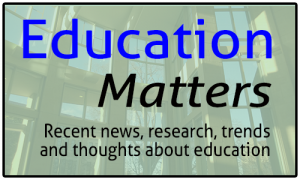Financing public higher education has grown increasingly challenging, with state funding for research universities declining by an average of 28 percent since 2003. What were once state-supported institutions have in many cases become quasi-private institutions to which states provide some money but still want full control.
To shore up their budgets, state colleges and universities have increased the proportion of out-of-state and international students, who pay higher rates of tuition. In fact, 43 state flagship universities had fewer in-state students in their freshman class in 2014 than they did in 2004. And out-of-state students made up more than half of the freshman class at 10 of those institutions, the Washington Post reports.

Alabama reported the biggest swing from in-state to out-of-state recruits, with out-of-state students now making up 64 percent of the freshman class. The Post says the percentage of in-state students in the freshman class has dropped by more than 20 points at Missouri, South Carolina, Oregon, Arkansas, University of California-Berkeley, Idaho State, and UCLA. Michigan State, Ohio State, Illinois, Iowa, Kentucky and Washington reported declines of more than 15 percentage points.
The University of Kansas had a slight increase in the percentage of out-of-state freshman between 2004 and 2014. In 2004, 29 percent of incoming freshmen were from out of state, according to university statistics. By 2014, that was about 33 percent. I say “about” because the Post’s analysis says that out-of-state students made of 37 percent of the freshman class of 2014, and federal data (which is based on university reports) says that 34 percent were from out of state.
10 ways to fail when creating an online program
Joshua Kim of Dartmouth offers an excellent list of potential pitfalls in the development of online programs. All are worth a look, but two stood out to me, largely because they apply to all courses and degrees, online or not.
- If You Don’t Put Student Learning At the Heart of Your Online Program, You Will Fail
- If You Don’t View the Creation Of Your Online Program As A Disciplined Experiment, You Will Fail
You’ll find the full list of 10 at Inside Higher Ed.
What is the future of higher education?
The Atlantic asked seven leaders from various areas of higher education to list reasons for hope and reasons for despair in 2016. Their responses run the gamut from the challenges of technology to the rising cost of college to the growing importance of creativity and ingenuity. A response from the author William Deresiewicz struck me as particularly timely and cogent.
Asked about his biggest concern in higher education, he replied:
The continued dominance of a narrowly “practical” approach at all levels. This is the attitude that says that the exclusive purpose of education is to prepare workers for the labor force. It shows up, among other places, in the overwhelming focus on math and reading in K-12 and the fetishization of STEM fields and universal disparagement of the liberal arts in college. It also underlies the continuing privatization of public education through the promotion of charter schools and other aspects of the “reform” agenda as well as the ongoing defunding of state universities—the idea being that if education serves the purposes of the market, it should be under the control of the market.
Deresiewicz said he saw “a gathering resistance to this mentality,” though, adding: “Students (and their parents) are getting tired of being treated like revenue streams and exploitable resources. But whether we will gather sufficient political strength to oust the entrenched interests on the other side is still a very open question.”
KU’s chancellor, Bernadette Gray-Little, was among the leaders who provided responses to The Atlantic. She offered measured, thoughtful responses, saying:
While I don’t find much that causes me to despair, I do have concerns about the way we invest in our future. If public funding for universities continues to decline, we will need to find different ways to support the way we educate our future leaders and the way we discover new things in our country. So many of our great societal and technological advances happen because of universities, and we need to make sure to protect these efforts from harm.
Asked about a reason for hope, she replied:
I am inspired by the enthusiasm and intellectual capacity of our next generation of leaders. I interact with students each day, which is a great joy. Our students are intellectually curious, and they pursue interesting goals. They’re building faster race cars and more sustainable buildings. They’re looking for cures to the latest diseases. They’re already finding ways to do all these things better than their elders. And they’re also ensuring that we stay focused on issues like economic disparity and racial inequity. The problems of our society will not be getting any easier during the next 50 years, but I’m glad we will have the young people I engage with today to help try to solve them.
Briefly …
Kenneth Bernstein, a recently retired high school teacher, warns college instructors that even advanced placement classes have done little to help the critical thinking of college-bound students. … The Chronicle of Higher Education and Education Week have both make successful and profitable shifts to digital as their print subscriptions have declined, Rick Edmonds of the Poynter Institute writes. … The entertainment industry has entered the MOOC business in the form of MasterClass, which sells online courses with the likes of Kevin Spacey and Dustin Hoffman (acting), Serena Williams (tennis) and Usher (performing) for $90 each. The creator of MasterClass, New Enterprise Associates, recently raised $15 million in capital from, among others, Robert Downey Jr. and Usher, the Wall Street Journal reports.